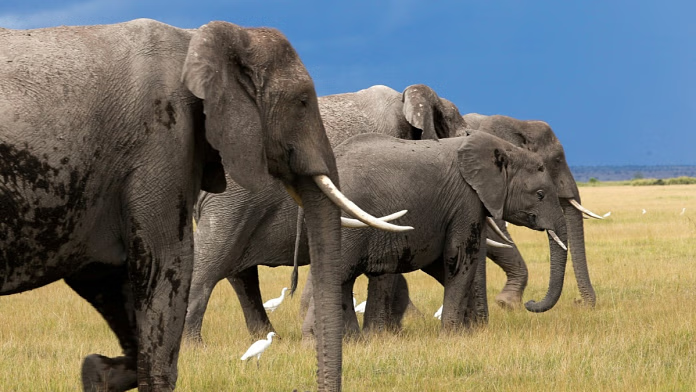Wildlife trafficking is a serious global issue that puts many animal species in danger.
It involves the illegal hunting, capturing, and selling of wild animals and their body parts. From elephants and tigers to birds, reptiles, and even insects, many creatures are being targeted for profit. This illegal trade is not only harming animals but also affecting ecosystems, communities, and national security.
What is Wildlife Trafficking?
Wildlife trafficking refers to the illegal trade of animals and animal products. This can include live animals, skins, bones, ivory, horns, and other body parts. Some animals are captured to be sold as exotic pets, while others are killed for traditional medicine, clothing, jewelry, or decorations.
Many traffickers operate through black markets and smuggling networks. These criminal activities are often hidden and can be hard to track. Unfortunately, the money made from trafficking is high, which encourages more people to take part in it.
Why Does Wildlife Trafficking Happen?
There are several reasons why wildlife trafficking continues to be a problem:
- High Demand: In many parts of the world, there is a strong demand for animal products. Ivory from elephants, for example, is used to make carvings and jewelry. Rhino horns are wrongly believed to have healing powers. Exotic pets like parrots, turtles, and monkeys are also in high demand.
- Weak Laws: In some countries, laws against wildlife trafficking are not strict or are poorly enforced. This allows traffickers to get away with their crimes easily.
- Poverty: In areas where people are struggling to survive, some may turn to illegal hunting and selling animals as a way to earn money.
- Corruption: In some places, government officials may take bribes to ignore illegal wildlife activities.
Animals Affected by Trafficking
Many species have become endangered or even extinct because of trafficking. Here are a few examples:
- Elephants: Hunted for their ivory tusks.
- Rhinos: Killed for their horns.
- Tigers: Poached for their skins, bones, and body parts used in traditional medicine.
- Pangolins: The most trafficked mammal in the world; hunted for their scales and meat.
- Parrots and exotic birds: Trapped and sold as pets.
- Sea turtles: Killed for their shells and meat.
Some animals don’t survive the process of trafficking. They may die during transport due to stress, dehydration, or poor conditions.
Effects on the Environment and Society
Wildlife trafficking doesn’t just hurt animals—it causes serious problems for people and the environment too.
- Loss of Biodiversity: When animals are taken from the wild or killed in large numbers, it disrupts the balance of nature. Each species plays a role in the ecosystem, and their loss can harm other plants and animals.
- Spread of Disease: Trafficking increases the risk of spreading diseases between animals and humans. For example, diseases like COVID-19, Ebola, and SARS are believed to have originated in animals sold in wildlife markets.
- Economic Impact: Many communities rely on wildlife for tourism and jobs. If animals disappear, so do these sources of income.
- Crime and Violence: Wildlife trafficking is often connected to other crimes like weapons smuggling, drug trafficking, and human trafficking.
What Is Being Done to Stop It?
Thankfully, many people, organizations, and governments are working hard to stop wildlife trafficking. Here’s how:
- Stronger Laws and Enforcement: Many countries have created stricter laws to protect wildlife. Authorities are also training special teams to catch poachers and traffickers.
- International Cooperation: Wildlife trafficking is a global problem, so countries need to work together. Organizations like INTERPOL, the United Nations, and CITES (Convention on International Trade in Endangered Species) help nations share information and enforce laws.
- Conservation Programs: Protected areas like national parks are being created and monitored to give animals safe habitats. Some programs also work to reintroduce animals into the wild.
- Community Involvement: Local communities are being educated about the importance of wildlife. When people understand that protecting animals can bring long-term benefits, they’re more likely to help stop illegal activities.
- Technology and Innovation: Drones, GPS tracking, and camera traps are being used to monitor animal movements and detect poaching. DNA analysis can also be used to trace illegal products back to their source.
- Public Awareness Campaigns: Celebrities, documentaries, and social media campaigns are helping to educate the public about the dangers of wildlife trafficking. The more people know, the more they can help.
What Can You Do to Help?
Even if you’re not a ranger or a scientist, there are many ways you can help in the fight against wildlife trafficking:
- Don’t buy illegal wildlife products such as ivory, exotic pets, or products made from endangered animals.
- Support organizations that protect wildlife, such as WWF, TRAFFIC, or the Wildlife Conservation Society.
- Educate others about the problem. Share information on social media or talk to friends and family.
- Report suspicious activity to local wildlife authorities if you suspect wildlife is being sold illegally.
- Travel responsibly by choosing eco-friendly tours and not supporting businesses that harm animals.
Wildlife trafficking is a serious threat to our planet’s animals and ecosystems. It is driven by greed, fueled by demand, and worsened by weak laws and corruption. But there is hope. Around the world, people are fighting back—through education, law enforcement, conservation, and cooperation. Every small action counts. By raising our voices and making smart choices, we can all help protect wildlife for future generations.

